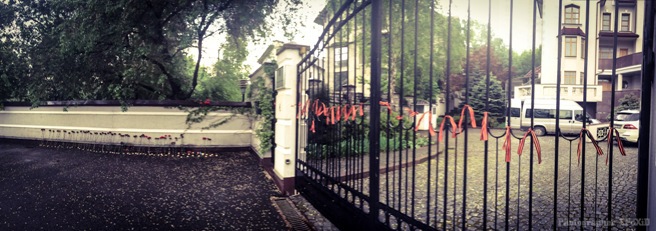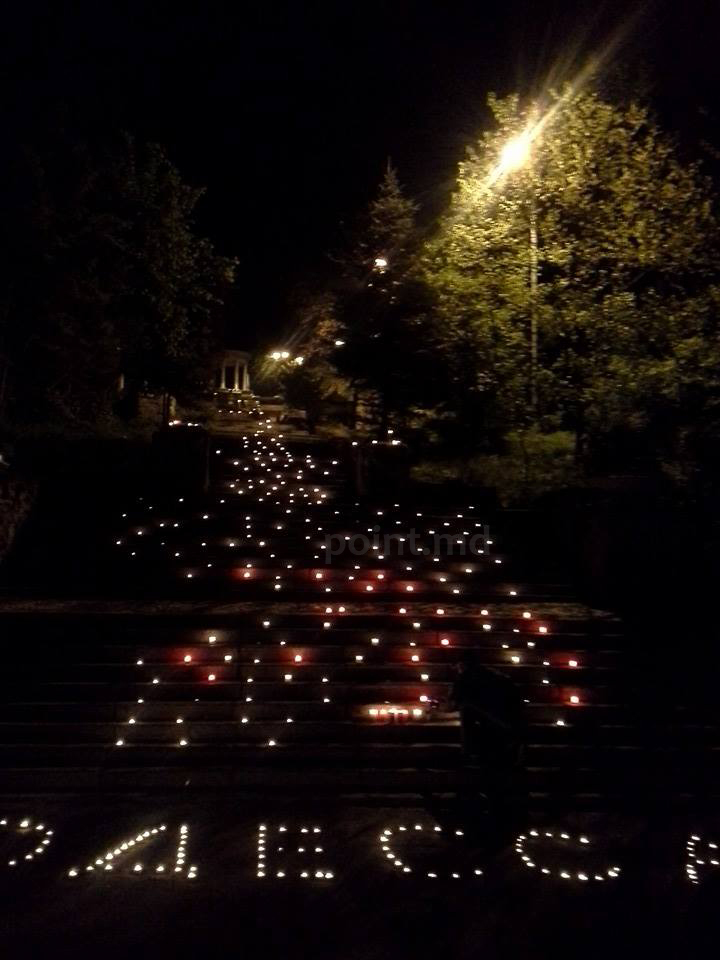After Crimea, Transnistria awaits 'Mother Russia'
Following Russia's annexation of Crimea, many people in the unrecognized breakaway province of Moldova hope they will be next in line.
“The will expressed by the people in Crimea and Transnistria demonstrates that the Russian world is uniting. The people’s wish for unity can't be stopped.”
Transnistria’s Foreign Minister, Nina Shtansky, 36, was in fighting mood, speaking last week.
As the political crisis between Russia and Ukraine deepens, most Transnistrians hope that the moment they have awaited for 24 years finally has arrived.
People here see their future with and within Russia - not in Moldova, the former Soviet republic to which Transnistria officially belongs.
When crossing the border of the self-proclaimed state, the Moldovan phone signal starts fading away.
Moldova does not recognize the border, nor does any other country in the world, Russia included.
But beyond the Dniester, the river that forms the de-facto frontier, Moldova has no say. In the border town of Bender, Russian troops guard the demilitarized zone.
Everything in Transnistria breathes of Russia. For a start, most people speak Russian as their first language. They go to school in Russian, too.
The products they buy are also Russian. Besides the red-green Transnistrian flag, the Russian flag waves over the banks of the Dniester.
The Soviet Union seems alive and well here. Around 60 statues of Lenin are dotted around the land of half a million people. Every village has its own Lenin.
The biggest stands proudly in front of the presidential building in the centre of the capital, Tiraspol. Taking photographs here is prohibited. Street banners show no advertisements, either.
Most European countries advise travelers to avoid the territory, as it is a not recognized state and has no foreign embassies, except for two somewhat symbolic embassies from Abkhazia and South Ossetia, two other unrecognized states, which Russia wrenched from Georgia.
It is possibly the most wholly Russian-minded piece of territory in all Europe. Unsurprisingly, therefore, locals greeted the news of Russia’s expansion into Crimea last week with joy.
“This shows us that our wish to be with Russia is getting closer and closer,” Andrey Smolenskiy, a Transnistrian tour guide, said, driving through Tiraspol to the “Immigration Office”, where visitors have to be registered during their stay in Transnistria.
“Everything is possible now. Transnistria can also become a part of the Russian Federation,” he added.
It is almost impossible to find anyone in Transnistria who opposes unification with Russia. In a referendum held in 2006, 97 per cent of locals voted to become part of Russia. “I'm sure if a referendum was held this week, the result would be 99.9 per cent,” Smolenskiy laughed.
As the Soviet Union began to collapse, Transnistria declared independence from Moldova, then still a republic inside the USSR.
Transnistria had always been Russian speaking and locals did not want to remain part of a Moldova that was heading towards independence and was leaning towards Romania – of which it once was part.
With the help of the Russian army, locals fought a brief and bloody war with Moldova in 1992. The conflict, which cost 300 lives, led to the creation of a demilitarized zone patrolled by the Russian army, which is still there today. The situation is once of the world’s “frozen” conflicts.
Internationally, Transnistria remains part of Moldova. But there is little communication between Tiraspol and Chisinau. Not even telephone landlines work between the two sides.
Over a third of the population hold Russian passports. Some have Moldovan or Ukrainian passports. The size of the queues forming daily in front of the Russian consulate in Tiraspol show that getting a Russian passport is increasingly popular.
Sasha, a 29-year-old lawyer from Tiraspol, holds a Ukrainian passport but wants to change it. “Ukraine has become a crazy country, I see no future there,” he said. “I feel Russian, and Russian citizenship will give me more opportunities,” he added.
Although there is no sign yet that Russia is planning to annex Moldova, the West is watching and speculating what President Vladimir Putin’s next step might be.
Last week, the commander of NATO forces in Europe, General Philip Breedlove, warned that Russian territorial ambitions might not stop in Crimea and could involve Transnistria, too.
The fact that the Russian army is already present on the territory adds to those worries. About 1,500 Russian troops have been stationed in Transnistria as peacekeepers since the end of the war in 1992.
Several unconfirmed recent reports talk of special military exercises on the part of the Russian troops in Transnistria.
It remains unclear whether Russia considers Transnistria to be important enough to make a move. A factory worker in Bender called Aleksandar is skeptical.
“I don’t think the Crimean situation will make things different in Transnistria,” he said.
“Russia didn't do anything to recognize us for the past 25 years,” he added. “I have hope, but I don't expect too much.”
Some say Russia benefits from maintaining the status quo in unrecognized Transnistria. That way, it keep its influence in Moldova, a country that is leaning towards Western Europe and is eager to join EU.
Moldova is expected to sign an association agreement with the European Union this year. In Ukraine, the government’s failure to sign a similar agreement sparked the protests that ousted the President and created the current political crisis.
But, even without Transnistria, Moldovan society is also divided. About 40 per cent of the population is Russian speaking. If it comes to having to choose between Russia and Europe, things could get messy in Moldova, too.
“The Ukrainian situation could be contagious for the separatists in Transnistria,” a worried Moldovan Prime Minister, Iurie Leanca, said recently.
Some Moldovans of Russian origin are even thinking of moving to Transnistria. According to the Transnistrian migration office, the number of Moldovans moving there is increasing.
In villages near the border, some people move to the Transnistrian side of the Dniester each winter because prices of electricity and gas are far lower over there.
Xenia, a 33-year-old single mother from Chisinau, of Russian descent, thinks of moving to Transnistria. She visits her boyfriend near Tiraspol every month.
“I feel good here, better than in Moldova,” she said. “My son can have a Russian education, and with a Transnistrian diploma he can enroll in a Russian university.” Many Transnistrians go to universities in Russia.
Many Transnistrians now hope for a scenario involving Russia’s further expansion to the east and south of Ukraine. If southern Ukraine became Russian, Transnistria would be easy, they say.
“It would even be easier than in Crimea,” said a former journalist called Nik, sipping white wine in a restaurant in downtown Tiraspol.
Transnistria’s infrastructure, facilities and institutions are practically in Russian hands already, and its citizens are unanimous about what they want.
“It could be done in just a couple of minutes,” he grinned. “We have only one wish here, to return to the motherland.”
In the village of Chobruchi, a ten-minute drive from Tiraspol, Natalie Darieva, 59, sits at the dining table and listens to a Russian radio station.
“I’ve heard it on the news", she proclaims triumphantly. “Someone said we can become a part of Russia now.”
Darieva lives off her small pension, and has a goat, a pig and chicken. Life isn’t bad at all, she emphasizes. “But it would be better with Russia,” she says.
“Pensions are higher. And maybe Russia would build more factories in Transnistria, so our young people don't need to move to Russia for work.”
Last edited by George1 on Mon Dec 01, 2014 1:53 am; edited 1 time in total







